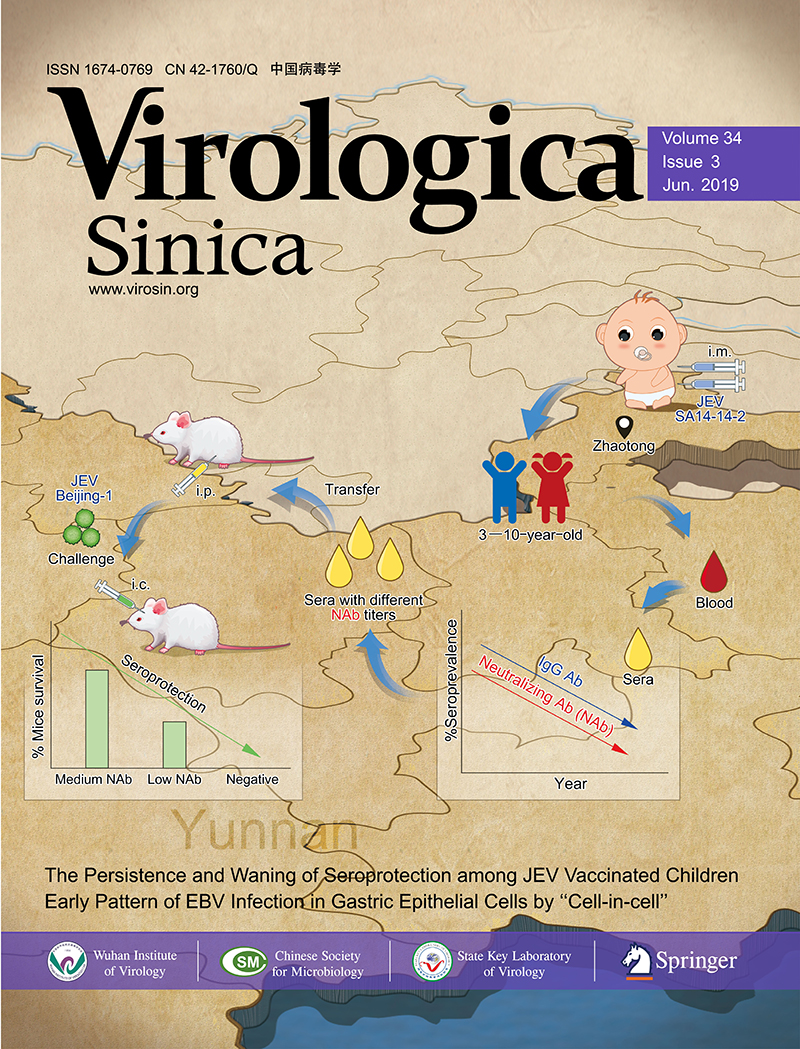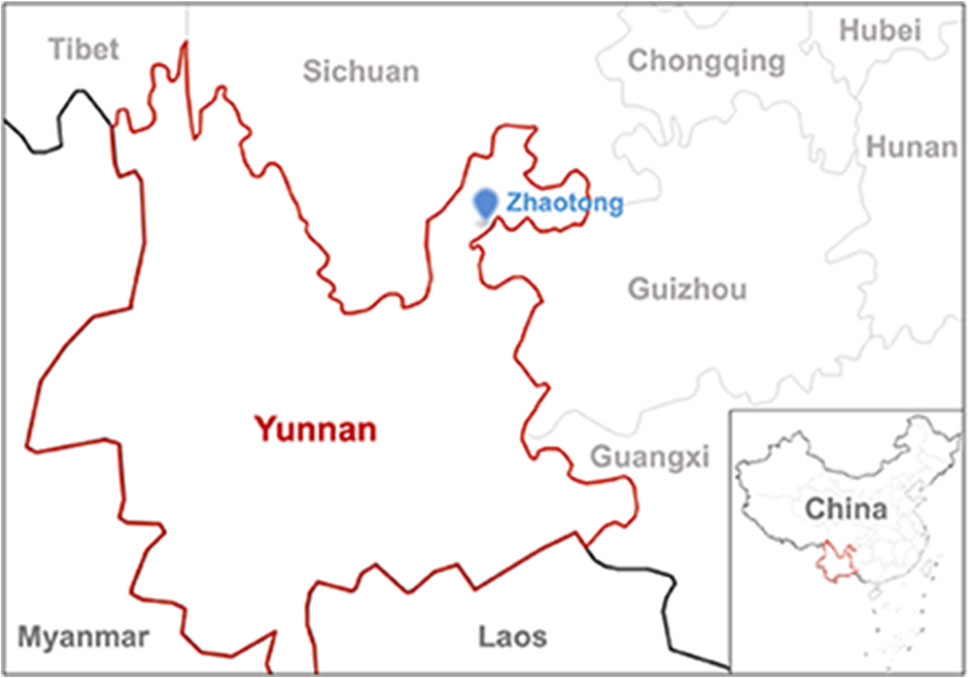-
Baldovin T, Mel R, Bertoncello C, Carpene G, Soppelsa F, Giliberti A, Baldo V (2012) Persistence of immunity to tick-borne encephalitis after vaccination and natural infection. J Med Virol 84:1274–1278
doi: 10.1002/jmv.v84.8
-
Buddhari D, Aldstadt J, Endy TP, Srikiatkhachorn A, Thaisomboonsuk B, Klungthong C, Nisalak A, Khuntirat B, Jarman RG, Fernandez S, Thomas SJ, Scott TW, Rothman AL, Yoon IK (2014) Dengue virus neutralizing antibody levels associated with protection from infection in thai cluster studies. PLoS Negl Trop Dis 8:e3230
doi: 10.1371/journal.pntd.0003230
-
Campbell GL, Hills SL, Fischer M, Jacobson JA, Hoke CH, Hombach JM, Marfin AA, Solomon T, Tsai TF, Tsu VD, Ginsburg AS (2011) Estimated global incidence of Japanese encephalitis: a systematic review. Bull World Health Organ 89(766–774):774A–774E
-
Gao X, Li X, Li M, Fu S, Wang H, Lu Z, Cao Y, He Y, Zhu W, Zhang T, Gould EA, Liang G (2014) Vaccine strategies for the control and prevention of Japanese encephalitis in Mainland China, 1951–2011. PLoS Negl Trop Dis 8:e3015
doi: 10.1371/journal.pntd.0003015
-
Hegde NR, Gore MM (2017) Japanese encephalitis vaccines: immunogenicity, protective efficacy, effectiveness, and impact on the burden of disease. Hum Vaccines Immunother 13:1–18
doi: 10.1080/21645515.2017.1278976
-
Hombach J, Solomon T, Kurane I, Jacobson J, Wood D (2005) Report on a WHO consultation on immunological endpoints for evaluation of new Japanese encephalitis vaccines, WHO, Geneva, 2–3 September, 2004. Vaccine 23:5205–5211
doi: 10.1016/j.vaccine.2005.07.002
-
Hsu LC, Chen YJ, Hsu FK, Huang JH, Chang CM, Chou P, Lin IF, Chang FY (2014) The incidence of Japanese encephalitis in Taiwan—a population-based study. PLoS Negl Trop Dis 8:e3030
-
Khan SA, Kakati S, Dutta P, Chowdhury P, Borah J, Topno R, Jadhav SM, Mohapatra PK, Mahanta J, Gupte MD (2016) Immunogenicity & safety of a single dose of live-attenuated Japanese encephalitis vaccine SA 14-14-2 in adults. Indian J Med Res 144:886–892
doi: 10.4103/ijmr.IJMR_712_15
-
Konishi E, Ajiro N, Nukuzuma C, Mason PW, Kurane I (2003) Comparison of protective efficacies of plasmid DNAs encoding Japanese encephalitis virus proteins that induce neutralizing antibody or cytotoxic T lymphocytes in mice. Vaccine 21:3675–3683
doi: 10.1016/S0264-410X(03)00382-7
-
Konishi E, Kitai Y, Tabei Y, Nishimura K, Harada S (2010) Natural Japanese encephalitis virus infection among humans in west and east Japan shows the need to continue a vaccination program. Vaccine 28:2664–2670
doi: 10.1016/j.vaccine.2010.01.008
-
Lee DW, Choe YJ, Kim JH, Song KM, Cho H, Bae GR, Lee JK (2012) Epidemiology of Japanese encephalitis in South Korea, 2007–2010. Int J Infect Dis 16:e448–e452
-
Lee EY, Kim JY, Lee DK, Yoon IS, Ko HL, Chung JW, Chang J, Nam JH (2016) Sublingual immunization with Japanese encephalitis virus vaccine effectively induces immunity through both cellular and humoral immune responses in mice. Microbiol Immunol 60:846–853
doi: 10.1111/1348-0421.12458
-
Li X, Ma SJ, Liu X, Jiang LN, Zhou JH, Xiong YQ, Ding H, Chen Q (2014) Immunogenicity and safety of currently available Japanese encephalitis vaccines: a systematic review. Hum Vaccin Immunother 10:3579–3593
doi: 10.4161/21645515.2014.980197
-
Li X, Cui S, Gao X, Wang H, Song M, Li M, Fu S, Lv Z, He Y, Lei W, Wang B, Lu X, Liang G (2016) The spatio-temporal distribution of Japanese encephalitis cases in different age groups in Mainland China, 2004–2014. PLoS Negl Trop Dis 10:e0004611
doi: 10.1371/journal.pntd.0004611
-
Liu X, Yu Y, Li M, Liang G, Wang H, Jia L, Dong G (2011) Study on the protective efficacy of SA14-14-2 attenuated Japanese encephalitis against different JE virus isolates circulating in China. Vaccine 29:2127–2130
doi: 10.1016/j.vaccine.2010.12.108
-
Luo D, Yin H, Xili L, Song J, Wang Z (1994) The efficacy of Japanese encephalitis vaccine in Henan, China: a case-control study. Southeast Asian J Trop Med Public Health 25:643–646
-
Mansfield KL, Hernandez-Triana LM, Banyard AC, Fooks AR, Johnson N (2017) Japanese encephalitis virus infection, diagnosis and control in domestic animals. Vet Microbiol 201:85–92
-
Misra UK, Kalita J (2010) Overview: Japanese encephalitis. Prog Neurobiol 91:108–120
doi: 10.1016/j.pneurobio.2010.01.008
-
Monath TP, Fowler E, Johnson CT, Balser J, Morin MJ, Sisti M, Trent DW (2011) An inactivated cell-culture vaccine against yellow fever. N Engl J Med 364:1326–1333
doi: 10.1056/NEJMoa1009303
-
Ohrr H, Tandan JB, Sohn YM, Shin SH, Pradhan DP, Halstead SB (2005) Effect of single dose of SA 14-14-2 vaccine 1 year after immunisation in Nepalese children with Japanese encephalitis: a case-control study. Lancet 366:1375–1378
doi: 10.1016/S0140-6736(05)67567-8
-
Oya A (1988) Japanese encephalitis vaccine. Acta Paediatr Jpn 30:175–184
doi: 10.1111/ped.1988.30.issue-2
-
Pan JR, Yan JY, Zhou JY, Tang XW, He HQ, Xie RH, Mao HY, Zhang YJ, Xie SY (2016) Sero-molecular epidemiology of Japanese encephalitis in Zhejiang, an eastern province of China. PLoS Negl Trop Dis 10:e0004936
doi: 10.1371/journal.pntd.0004936
-
Saxena V, Dhole TN (2008) Preventive strategies for frequent outbreaks of Japanese encephalitis in Northern India. J Biosci 33:505–514
-
Simon LV, Kruse B (2017) Encephalitis, Japanese. StatPearls, Treasure Island
-
Sirivichayakul C, Sabchareon A, Limkittikul K, Yoksan S (2014) Plaque reduction neutralization antibody test does not accurately predict protection against dengue infection in Ratchaburi cohort. Thailand. Virol J 11:48
doi: 10.1186/1743-422X-11-48
-
Sohn YM, Tandan JB, Yoksan S, Ji M, Ohrr H (2008) A 5-year follow-up of antibody response in children vaccinated with single dose of live attenuated SA14-14-2 Japanese encephalitis vaccine: immunogenicity and anamnestic responses. Vaccine 26:1638–1643
doi: 10.1016/j.vaccine.2008.01.021
-
Solomon T, Dung NM, Kneen R, Gainsborough M, Vaughn DW, Khanh VT (2000) Japanese encephalitis. J Neurol Neurosurg Psychiatry 68:405–415
doi: 10.1136/jnnp.68.4.405
-
Tandale BV, Khan SA, Kushwaha KP, Rahman H, Gore MM, Japanese Encephalitis Vaccination Efficacy Case Control Study G (2018) Effectiveness of Japanese encephalitis SA 14-14-2 live attenuated vaccine among Indian children: retrospective 1:4 matched case-control study. J Infect Public Health 11:713–719
doi: 10.1016/j.jiph.2018.04.011
-
Tseng HF, Tan HF, Chang CK, Huang WL, Ho WC (2003) Seroepidemiology study of Japanese encephalitis neutralizing antibodies in southern Taiwan: a comparative study between urban city and country townships. Am J Infect Control 31:435–440
doi: 10.1067/mic.2003.73
-
Turtle L, Tatullo F, Bali T, Ravi V, Soni M, Chan S, Chib S, Venkataswamy MM, Fadnis P, Yaich M, Fernandez S, Klenerman P, Satchidanandam V, Solomon T (2017) Cellular immune responses to live attenuated Japanese encephalitis (JE) vaccine SA14-14-2 in adults in a JE/dengue co-endemic area. PLoS Negl Trop Dis 11:e0005263
doi: 10.1371/journal.pntd.0005263
-
Upreti SR, Lindsey NP, Bohara R, Choudhary GR, Shakya S, Gautam M, Giri JN, Fischer M, Hills SL (2017) Updated estimation of the impact of a Japanese encephalitis immunization program with live, attenuated SA 14-14-2 vaccine in Nepal. PLoS Negl Trop Dis 11:e0005866
doi: 10.1371/journal.pntd.0005866
-
Van Gessel Y, Klade CS, Putnak R, Formica A, Krasaesub S, Spruth M, Cena B, Tungtaeng A, Gettayacamin M, Dewasthaly S (2011) Correlation of protection against Japanese encephalitis virus and JE vaccine (IXIARO(R)) induced neutralizing antibody titers. Vaccine 29:5925–5931
doi: 10.1016/j.vaccine.2011.06.062
-
Wang H, Liang G (2015) Epidemiology of Japanese encephalitis: past, present, and future prospects. Ther Clin Risk Manag 11:435–448
-
Wang R, Liao X, Fan D, Wang L, Song J, Feng K, Li M, Wang P, Chen H, An J (2018) Maternal immunization with a DNA vaccine candidate elicits specific passive protection against post-natal Zika virus infection in immunocompetent BALB/c mice. Vaccine 36:3522–3532.
doi: 10.1016/j.vaccine.2018.04.051
-
Wu CJ, Huang HW, Tao MH (2003) Induction of cross-protection against two wild-type Taiwanese isolates of Japanese encephalitis virus using Beijing-1 strain DNA vaccine. Vaccine 21:3938–3945
doi: 10.1016/S0264-410X(03)00277-9
-
Xin YY, Ming ZG, Peng GY, Jian A, Min LH (1988) Safety of a live-attenuated Japanese encephalitis virus vaccine (SA14-14-2) for children. Am J Trop Med Hyg 39:214–217
doi: 10.4269/ajtmh.1988.39.214
-
Zhang L, Luan RS, Jiang F, Rui LP, Liu M, Li YX, Yin ZD, Luo HM (2012) Epidemiological characteristics of Japanese encephalitis in Guizhou Province, China, 1971–2009. Biomed Environ Sci 25:297–304















